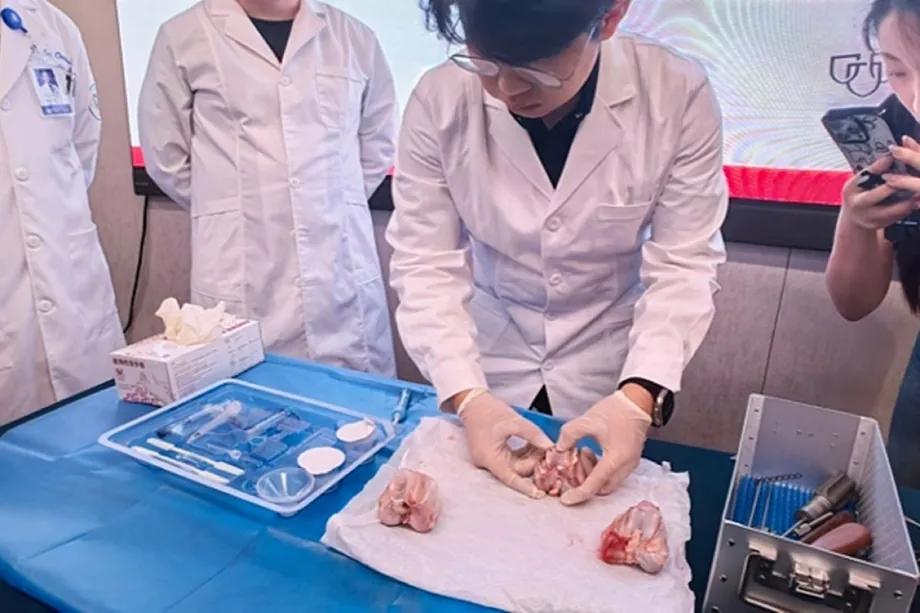During the Song Dynasty in China (between 960 and 1279 AD), builders in what is now the city of Quanzhou, in the south of the Asian giant, faced a problem with the pillars of one of the stone bridges built over the sea, which extended over two kilometers to Anhai Island. The base of the bridge was in open sea, and the saltwater currents and waves wore down the infrastructure. Local officials found a clever solution: planting oysters around the foundations. As the mollusks grew, they adhered strongly to the stone and formed compact masses of shells. These natural colonies acted as a kind of cement because they have a naturally secreted glue, mainly composed of calcium carbonate and proteins, which could seal the joints and protect the base from the onslaught of the waves.
Chinese books recount the story of the "guardian oysters" of a bridge that still stands today as one of the world's first feats of bioengineering. Millennia later, Chinese scientists have uncovered the secrets of this ancient oyster technique for gluing human bones.
Nine years ago, Lin Xianfeng, a young orthopedic surgeon, read about the Song Dynasty builders' feat during a vacation in his hometown, Wenzhou. While walking on a bridge to a small island, Lin saw a dense layer of oysters attached to the concrete, remaining firm against the waves and strong winds that day. Then, a light bulb of inspiration lit up for the doctor, and he internally posed a question: if oysters could firmly adhere to bridges, fortifying their bases, or to rocks under the sea, could a similar feat be achieved in the humid environment of the human body?
Many years before, retired physician Professor Fan Shunwu, with over 40 years of experience as a traumatologist at Sir Run Run Shaw Hospital, affiliated with the Zhejiang University School of Medicine in eastern China, had asked himself the same question. "For almost a century, scientists and doctors worldwide have been exploring adhesive materials for bones. Traditional methods of metal fixation have difficulties. Fixing small bone fragments requires a lot of time and effort because achieving a seamless union is not easy. Additionally, it can lead to the loss or reabsorption of bone fragments during the procedure. Everything would change if there were a medical material that could directly bond bones," Fan stated in one of his theses.
When Dr. Lin became a resident at Zhejiang Hospital, Professor Fan became his mentor. Later, guided by the veteran traumatologist, Lin decided to lead a young team to research the development of a bone glue inspired by oysters.
The news broke in September and made headlines worldwide: a team of researchers had developed the world's first "bone glue" inspired by oysters that adhere to ocean rocks and bridge pillars. At a press conference held at Zhejiang Hospital, Dr. Lin introduced Bone 02, an invention that nods to "502", a widely used Chinese household superglue created in a laboratory with that number.
"We have created a bioadhesive that offers a less invasive alternative to the nails and metal plates commonly used to treat fractures. It could be especially effective for comminuted fractures, when bones fragment into three or more pieces. This bio-glue forms bonds strong enough to withstand over 200 kilograms. Furthermore, it safely dissolves in six months," explained the research lead, detailing that clinical trials have shown promising results in over 150 patients.
The team explained that in one trial, they were able to bond bone fragments from a wrist fracture in just three minutes through a 2 to 3-centimeter incision to inject the glue, while the standard intervention would have required a larger incision to implant metal plates and screws, with risks of nerve damage and a second surgery a year later to remove the materials. The patient's full recovery took three months.
Lin has mentioned in several interviews for local television that the obsession with finding this bone glue stemmed from the frustration of spending many hours in the operating room treating fractures. "During the early years, research stalled because we were trying to find a compound that could quickly form strong bonds in the bloodstream and present excellent biocompatibility to avoid tissue damage and ensure safe absorption in the body," he explained.
Image of an intervention by Dr. Lin Xianfeng.CHRONICLE
Through extensive studies on the biological adhesion mechanism of oysters, hundreds of test optimizations, and experiments with mice and rabbits, Lin's team managed to create a non-toxic material that allows for instant and strong bonding in just three minutes. "The material is completely biodegradable and naturally reabsorbs as the bone heals over approximately six months, creating a scar-free appearance and eliminating the need for a second surgery, as required in the traditional process," Lin detailed. "It is suitable for repairing fractures of all sizes and in virtually all parts of the body, especially tiny bone fragments that are difficult to repair with traditional instruments."
Since 2016, Lin has been experimenting with oyster secretions to develop an effective non-toxic bone glue, but the "cement" of these mollusks has long intrigued researchers worldwide. In 2010, a U.S. team from Purdue University published a study deciphering the chemical components of the adhesive produced by oysters. "Oyster cement appears to be harder than the substances mussels or barnacles use to adhere to rocks, and could be the key to developing more environmentally friendly adhesives with applications ranging from dentistry to construction and maritime transport," noted the report's director, chemist Jonathan Wilker.
Rebecca Metzler, another researcher from Colgate University in New York, also led a team that investigated the characteristics of oyster glue and its functionality in bonding dental implants: it is composed of tiny particles of a mineral called aragonite, combined with a series of proteins that drive the development of better synthetic and environmentally friendly adhesives. Now, the oysters that once secured bridges in the Song Dynasty could be the key to a revolutionary glue for fractured bones.
